'Superfoods' are considered more nutritionally dense than other foods.
However, this marketing term can be misleading, leaving
consumers vulnerable and the foods themselves a mystery.

'Superfoods' are considered more nutritionally dense than other foods.
However, this marketing term can be misleading, leaving
consumers vulnerable and the foods themselves a mystery.

“Superfood” is a marketing term not a scientific one.
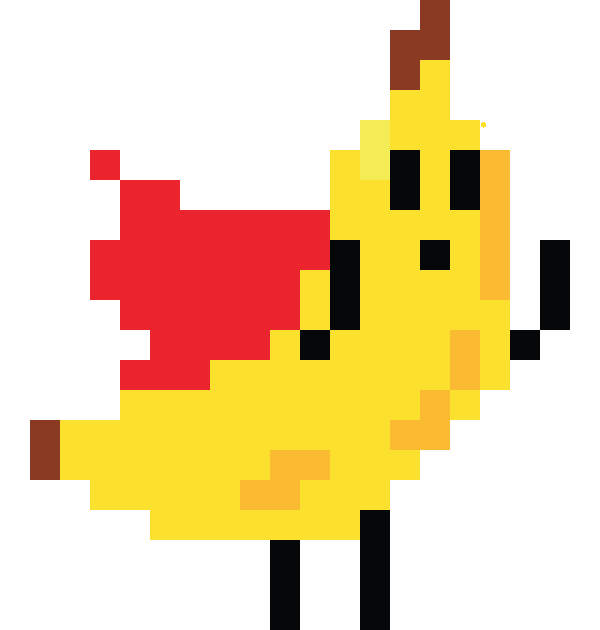
The term was first used in
1917 by The United Fruit Company, now ‘Chiquita Banana’,
in a series of pamphlets to promote sales.
Researchers published articles using the term and in turn,
the media printed headlines talking about the ‘super nutritious’ bananas.
All of this increased banana sales for years to come.
This particular story will set the script for future superfoods.
Superfoods equal money:
• Between 2011 and 2015 there was a
202% increase in the number of new products that claimed the 'superfood' status.
• In 2018 the global industry was estimated to be worth
137 billion USD.
• And according to Google Ngrams, the use of the term
has increased since 2014.
Not really.
No one ‘superfood’ can cover all nutritional needs.
Marketers use the term ‘superfood’ to stretch the nutritional value of a food,
using carefully worded statements that imply extraordinary health benefits.
For example, in 2017 a Canadian news agency,
CBC News, found a granola-quinoa product that claimed it lowered cholesterol,
controlled blood sugar and prevented cancer.
Only after the news agency filed a
complaint against them was the company forced to change their marketing.
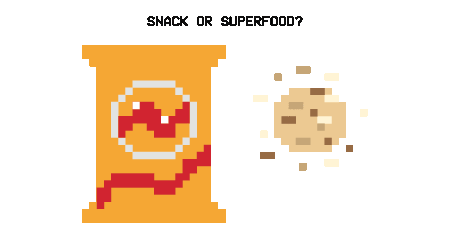
Would potato chips with quinoa be considered a snack or a 'superfood'?
This example shows how lack of regulation allows companies
to exaggerate the health benefits of a product, leaving consumers vulnerable
and putting a lot of weight on their decisions.
To protect consumers from these predatory practices, the
European Union banned the term in 2007,
unless it was accompanied by a specific authorised health claim.
However, most of the world lacks regulation.
The story is even more complicated when it comes to
'superfoods' with an indigenous origin.
These foods used to play a key role in ancient civilizations but colonization
often led to three potential scenarios: exploitation, neglect or eradication.
Taken from Mesoamerica and incorporated into western diets, they are now associated with Mediterranean cuisine and its cultures.
Another Mesoamerican crop was exported outside the region but it didn't gain popularity until the 21st century.
Due to their high religious value in Mesoamerican civilizations, quinoa was prohibited and lost for almost 400 years.
With superfoods we have a glimpse of how different actors have an impact on our food.
Our modern food systems are complex, interconnected webs of activities
involving: governance, marketing and economics,
agriculture and sustainability, society and our health.

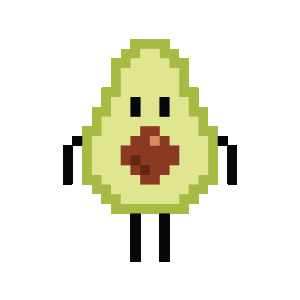
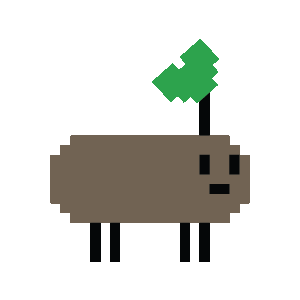

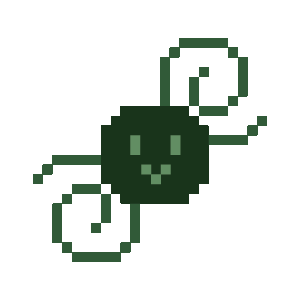
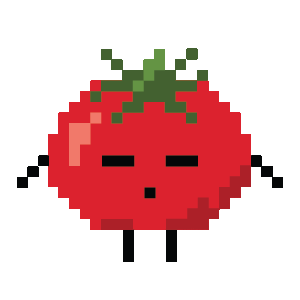
For now, you can only unravel the super story of chia.
As the project grows, more 'superfoods' will be added.
The score for each 'superfood' was calculated using the following rubric.
| - | - | - | - | ||
|
Nutrition
How nutritionally dense the food is? |
Low in vitamins and minerals - less than 5% of daily value | Some vitamins or minerals - less than 20% of daily value | High in vitamins or minerals - more than 20% of daily value | Very high in vitamins and/or minerals - more than 50% of daily value | |
|
Sustainability
How sustainable is the crop? |
Very high water footprint - more than 25,000 liters per kg | High water footprint - more than 15,000 liters per kg | Moderate water footprint - less than 6,000 liters per kg | Low water footprint - less than 3,000 liters per kg | |
|
Laborers
Are there any reports of violations of worker's rights? |
Multiple issues and reports | Several issues and reports | No known issues | Fair trade agriculture | |
|
Backstory
What is the origin of this food? |
Eradication | Neglect | Exploitation | No issues | |
You can also explore the story of chia in this article or through a
videogame!
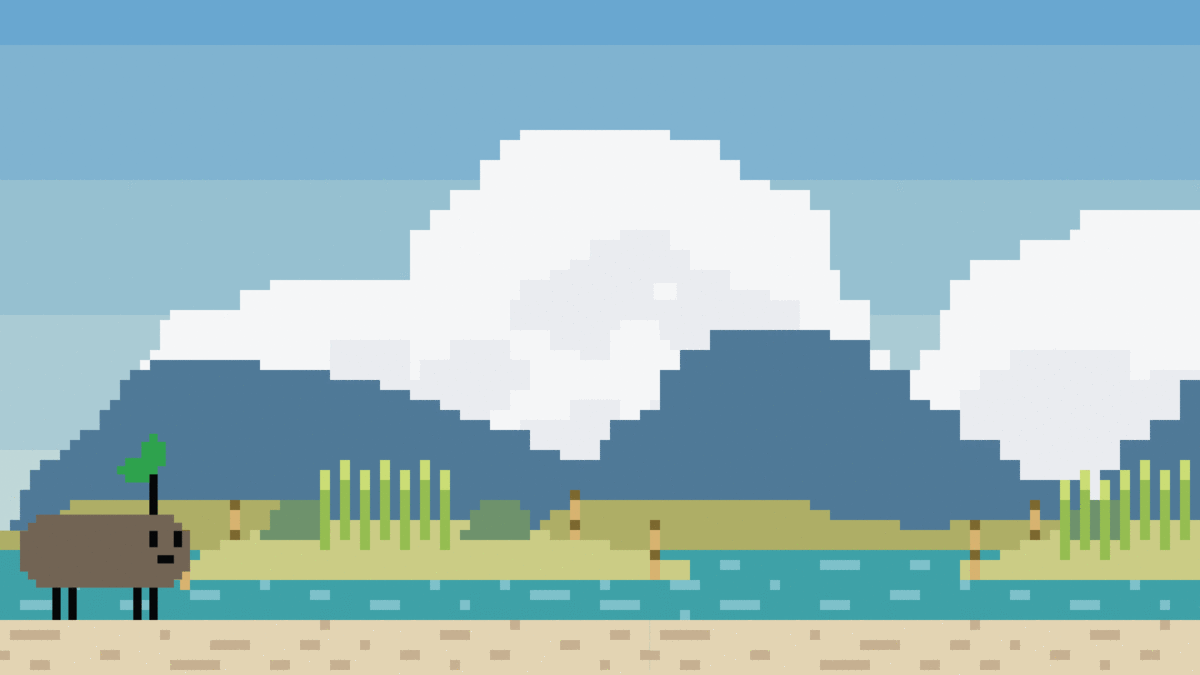
From tribute to the gods to a novelty decoration; from being almost eradicated to being overproduced. The story of chia is full of ups and downs, let’s unravel it.
Depicted above are two Aztec gods: Chicomecoatl, goddess of the harvest and Quetzalcoatl, god of wisdom.
Chia was domesticated by indigenous groups in Mesoamerica around 3500 B.C.E and it played a key role in pre colonial diets.
The seed was essential to the Aztecs, who used chia as food for warriors on campaign, payment for widows, body paint, medicinal remedies, and offerings in religious ceremonies.
Chia seeds were also a pillar in the Aztec diet. TThrough a combination of four main grains, chia seeds, corn, amaranth and beans, achieve a balanced diet that covered all of their nutritional needs.
Highlights of Aztec life:
During the colonization of Mesoamerica, the Aztec religion was prohibited so chia consumption was banned and the chia crops were burnt down.
Thanks to other indigenous groups, like the Rarámuri (Tarahumara), chia managed to survive in isolated communities for almost 400 years.
It wasn't until 1932 that chia reappeared as a crop in Mexico. Nutritional research brought more attention to chia seeds by recognizing them as a good source of healthy fats related to cardiovascular health.
Do chia seeds deserve the 'superfood' status?
Let's see how 50 grams of chia compare to other foods.
The percentages and nutrition facts are based on a 2000 calorie diet.
Chia seeds became known internationally in the 1990s when researchers in the Western Argentina Regional Project conducted tests on its nutritional value and resilience as a crop.
Chia seed production is very sustainable with a
low water footprint and no significant damage to soil.
It also doesn't need any sprays since the essentials oils in chia are natural insect repellants.
Let's compare how much water per kilogram similar crops need.
*The exact number of water liters for chia seeds was not available.
Even though, chia production is sustainable, agriculture is one of the most dangerous industries. Workers might be exposed to harsh and unsafe working conditions, low wages and other forms of abuse.
There are currently no known labor issues in chia production but it is recommended to look for ethical agriculture products, like fair trade, when possible.
However, chia production has caused some problems around the world.
For example, when the global demand for chia increased around 2012,
farmers in Mexico
increased their production expecting the demand to continue to grow.
Unfortunately, overproduction followed leaving farmers vulnerable,
having to request financial aid from the government.
Situation of chia trade until 2014 and consequent predictions.
Chia is so easy to grow, it doesn’t even need soil!
You can soak the seeds for a day, place them on a paper towel and
see them grow over the next 2 weeks. The shoots are called
microgreens, which are edible and can be added to salads.
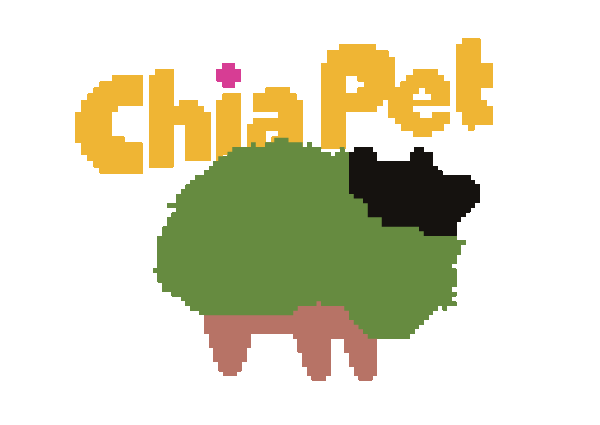
In 1977, Joe Peddott took advantage of how easily chia grows when he imported some terracotta decorations from Mexico and turned them into a novelty item to sell in the USA as "chia pets".
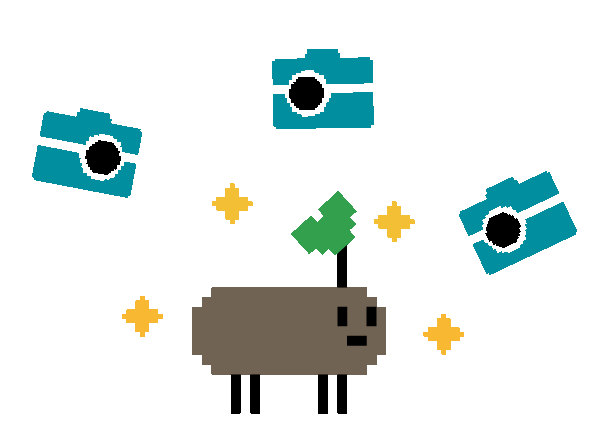
2009 was a big year for chia seeds. The EU recognized chia seeds as a novel food authorizing consumption in Europe.
Also, the book “Born to Run" was released, retelling the story of a group of indigenous Rarámuri marathon runners who, against incredible hardships, won the Leadville race series. The Rarámuri runners helped increase the popularity of chia seeds since they consumed chia before and during the race.
Big media influencers, like Dr. Oz in the United States, contributed to the popularity of chia seeds when they discussed their nutritonal value and health benefits, thus giving it the status of a 'superfood' and consequently increasing sales and production worldwide.
There is a lot of buzz around chia seeds, but what is a myth and what is real?
When the global demand for chia started to increase in the early 2010s, overproduction followed in 2014 creating an inflation period, however the market stabilized around 2016.
Nowadays the top producers are Bolivia, Paraguay and Argentina with the top importers being the United States, Germany and Spain.
In 2021 the global chia market was evaluated in 66.5 million USD and it is projected to keep growing at around 5.8% annually.
Chia is also the name of a new type of cryptocurrency
that claims to be more eco-friendly than its counterparts since the technology behind it uses less power.
This could mean Chia will be a sustainable way to handle crypto transactions.
However, the Chia coin launch has disrupted the
short term supply of disk drives.
Cryptocurrencies and the market around them change day by day, so the story keeps developing.
Food is something so essential that we often overlook its complexity.
The story of chia seeds is full of ups and downs but ultimately it is a story of survival.
Chia seeds were discovered by indigenous groups and played a key role in their diets, but colonization and globalization have obscured this fact. However, it is also thanks to indigenous groups, like the Rarámuri, that these crops are still alive.
Even if marketers have exaggerated the foods' health benefits to increase sales, crops like chia are more nutritionally dense and sustainable than others. This could mean that chia could play a key role in the future of food.
Consumers are vulnerable to misinformation but their purchases end up shaping agricultural practices, impacting farmers' lives and influencing markets around the world.
Maybe you are wondering whether you should eat chia?
The answer isn't that simple.
There are lots of things to consider. Sometimes the best solution is to keep asking more questions.
One small seed can have a giant impact.
Superfood Story is a project developed by
Ana Sifuentes
as part of the Masters Degree in Data and Design at ELISAVA.
Tutors: Pau García and María Fabuel
Videogame code: Luis Sifuentes
Videogame music: Giovanni Esposito
A very special thanks to: Alex De La Fuente , Francisco Estivallet , Paulina Gómez, Traci Haddock, Matteo Moretti, Leticia Pozza and Vinoo Selvarajah.
Read the making of SUPERFOOD STORY here.